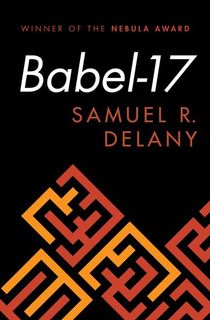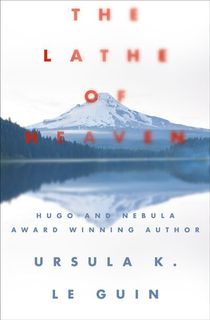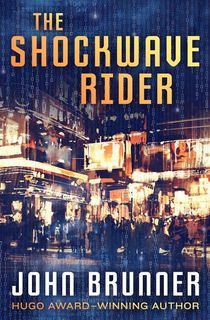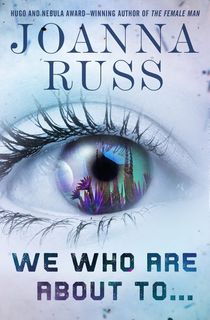Broadly speaking, New Wave science fiction refers to an era in the genre that flourished in the 1960s and 1970s, and which consciously rejected the tropes from science fiction’s so-called Golden Age. The New Wave era focused on experimentation, social commentary, and literary merit, as opposed to hard science and stereotypical adventure plots.
The writers associated with this movement, such as Ursula K. Le Guin, James Tiptree Jr., Samuel Delany, J.G. Ballard, Michael Moorcock, and Joanna Russ, among many others, used the typical science fiction elements—cyborgs, aliens, dystopias, advanced technology—to explore complex questions relating to politics, societies, cultures, and the human condition.
But wait, isn’t that something science fiction has always tried to do?
Well, yes and no.
Science Fiction: A Very Brief History
Science fiction has an eclectic past. Mary Shelley’s Frankenstein (1818) deals with some of the genre’s pet themes (a mad scientist, advanced technology, the ethics of scientific experimentation) and is often regarded as the first true science fiction novel.
But stories with futuristic and scientific elements can be found further back in time, even in the epics of ancient cultures. Lucian of Samosata’s satirical True History (written sometime in second century AD) features space travel and alien encounters, while the Hindu epic The Ramayana includes flying machines and weapons of mass destruction.
Nevertheless, science fiction as we understand it properly took off in the late 19th and early 20th centuries, with the rise of the book market and the far-reaching impact of the Industrial and Scientific Revolutions on the literature of the times. Later, the genre was influenced and molded by the rising popularity of pulp magazines, superhero comics, and cheap paperbacks, alongside more mainstream literary and cultural movements, such as Modernism.
Thus, by the 1960s, the genre of science fiction had already been established and redefined several times.
Science Fiction's Golden Age
The late 1930s to the early 1960s has been famously regarded as the Golden Age of Science Fiction, with writers like Isaac Asimov, Ray Bradbury, and Robert Heinlein predominating the field. This era gave birth to enduring tropes such as space travel, technological advances, and scientific achievement, all usually rooted in libertarian ideology.
Sci-fi of this era often celebrated science as a cure-all to society’s troubles, and posited a “bright, shiny future,” with stories packed with typical action and adventure.
The Birth of New Wave Science Fiction
The New Wave, which began in the 1960s, can be read as a grittier and darker take on the genre, and a rejection of many of the core values that characterized classic sci-fi. The New Wave was concerned with exploration and experimentation of the “inner space” as opposed to “outer space," tackling topics that may have been otherwise censored, and deconstructing familiar tropes.
In 1964, Michael Moorcock became the editor for the New Worlds magazine, which soon began to publish more avant-garde material from writers such as Brian Aldiss and Thomas M. Disch. Just three years later in 1967, Harlan Ellison, who edited the anthology Dangerous Voices, called for admissions that would have been considered too controversial in other publications.
Moreover, the New Wave writers began to look beyond the genre for inspiration. They drew upon diverse influences, such as the Modernist and Postmodernist literary movements, and beatnik writers such as William S. Boroughs. They also responded to the current trends in counter cultures, sexual liberation, and political uncertainty. The sci-fi was therefore experimental in terms of both subject and style, characterized by anti-heroes probing difficult topics with a sense of cynicism or ambivalence.
By the 1980s, the movement had faded, yet its influence endured with the development of new science fiction subgenres that continued asking similar questions, such as cyberpunk and slipstream.
The New Wave Reading List (for Beginners)
Below are a few novels associated with New Wave science fiction. Featuring some familiar titles, alongside less-famous works, this list is by no means comprehensive, and is meant as a starting point for a deeper exploration into the genre.
1964

Nova Express
Nova Express is a stylistic experiment, which uses Borrough’s own version of the “cut-up method” to enclose snippets of different texts into one work.
It is the third book is his Nova trilogy (preceded by The Soft Machine and The Ticket That Exploded) and is considered by some critics to be his best novel. A deeply metaphorical work, Nova Express is concerned with machine control on human life, positing a conflict between the Nova Criminals and the Nova Police, which cannot exist without the other.
1966

Babel-17
Delany’s short novel is built on a very interesting premise: the invention of a language that can be wielded as a weapon.
Telepath Rydra Wong, who is recruited to investigate the traitors and probe into the language, realizes that the more she learns of “Babel- 17," the more likely she is to become a traitor herself.
1969

Slaughterhouse Five
Widely regarded as a cult classic, this Kurt Vonnegut novel is a whimsical and experimental foray into the mind of Billy Pilgrim, an American soldier and chaplain’s assistant turned unlikely time-traveler.
The story is narrated in a non-linear fashion, as we witness Billy relive the horrors of war and his strange experiences after being abducted by aliens.
1971

The Lathe of Heaven
When it comes to science fiction and fantasy, Ursula K. Le Guin is a household name, thanks to the enormous popularity of her fantastical Earthsea novels.
But several of her adult novels remain as deeply relevant, with The Lathe of Heaven being one of them.
The protagonist George Orr is a draftsman whose dreams can alter reality, and is addicted to drugs that prevent such changes. While undergoing treatment for his drug addiction, George encounters mysterious psychiatrist William Haber, who begins to use Orr for his own agenda.
1973

Crash
Crash is a rather challenging and controversial novel, centered on the figure of Robert Vaughan, who is sexually aroused by car crashes and whose definitive fantasy is to die in a collision accident with Elizabeth Taylor.
Vaughan even gathers a group of faithful followers who are obsessed with enacting famous car crashes to satisfy their desires. Ballard’s novel is a daring exploration of perversion and technology.
1975

The Shockwave Rider
Almost a decade before William Gibson published Neuromancer (1984) and long before the advent of the internet, Brunner wrote The Shockwave Rider, which imagines a dystopian world where computer networks link everyone.
While citizens do not enjoy any privacy and are secretly controlled by the state apparatus, corporations run amok. The story follows Nick Haflinger, a proto-hacker, as he navigates and tries to escape this dangerous (but strangely prophetic) world.
1977

We Who Are About To . . .
In this daring and challenging novel by feminist author Joanna Russ, a group of interstellar tourists crash-land on a hostile planet.
As her fellow shipwrecked travelers attempt to make the best of their situation, one female passenger remains realistic about their chances for survival.
1978

Up the Walls of the World
James Tiptree Jr. was the pen name for female author Alice Bradley Sheldon. Tiptree/Sheldon's work explores sexuality, identity, and characters on the fringes of society.
Up the Walls of the World is a story of galactic proportions, full of sentient cosmic entities, psionic powers, and more compelling concepts.
Featured image via Style
This post first appeared on The Portalist.



